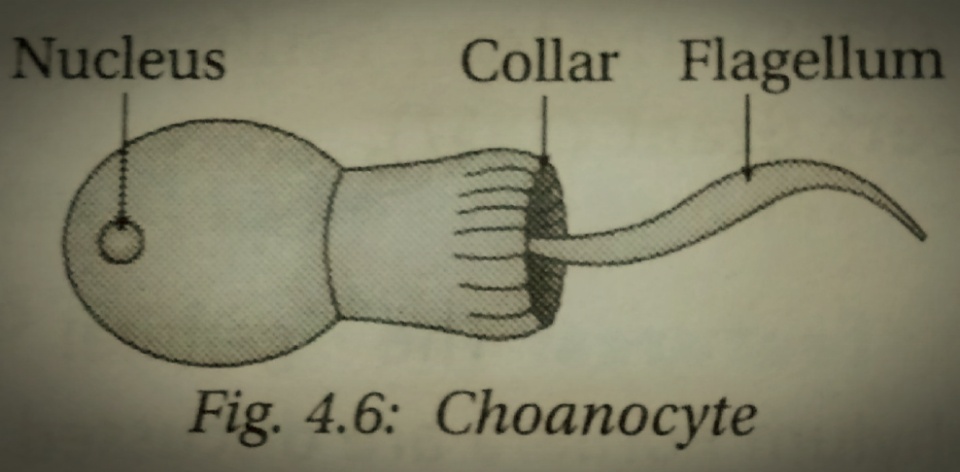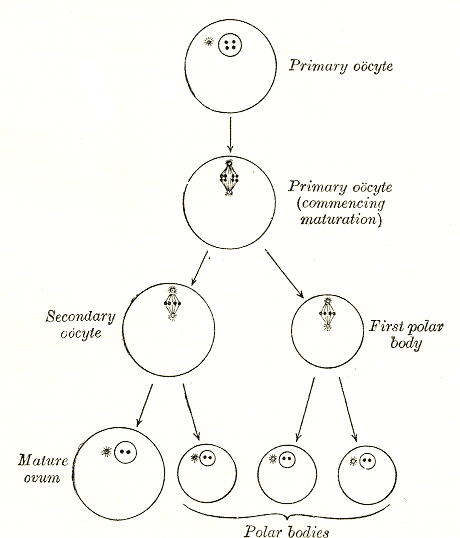|
Collar Cells
Choanocytes (also known as "collar cells") are cells that line the interior of asconoid, syconoid and leuconoid body types of sponges that contain a central flagellum, or ''cilium,'' surrounded by a collar of microvilli which are connected by a thin membrane. They make up the choanoderm, a type of cell layer found in sponges. The cell has the closest resemblance to the choanoflagellates which are the closest related single celled protists to the animal kingdom (metazoans). The flagellae beat regularly, creating a water flow across the microvilli which can then filter nutrients from the water taken from the collar of the sponge. Food particles are then phagocytosed by the cell. Anderson, D. (2001) ''Invertebrate Zoology'' Oxford University Press Location Choanocytes are found dotting the surface of the spongocoel in asconoid sponges and the radial canals in syconoid sponges, but they comprise entirely the chambers in leuconoid sponges. Function By cooperatively moving their ... [...More Info...] [...Related Items...] OR: [Wikipedia] [Google] [Baidu] |
Cell (biology)
The cell is the basic structural and functional unit of life forms. Every cell consists of a cytoplasm enclosed within a membrane, and contains many biomolecules such as proteins, DNA and RNA, as well as many small molecules of nutrients and metabolites.Cell Movements and the Shaping of the Vertebrate Body in Chapter 21 of Molecular Biology of the Cell '' fourth edition, edited by Bruce Alberts (2002) published by Garland Science. The Alberts text discusses how the "cellular building blocks" move to shape developing s. It is also common ... [...More Info...] [...Related Items...] OR: [Wikipedia] [Google] [Baidu] |
Histology
Histology, also known as microscopic anatomy or microanatomy, is the branch of biology which studies the microscopic anatomy of biological tissues. Histology is the microscopic counterpart to gross anatomy, which looks at larger structures visible without a microscope. Although one may divide microscopic anatomy into ''organology'', the study of organs, ''histology'', the study of tissues, and '' cytology'', the study of cells, modern usage places all of these topics under the field of histology. In medicine, histopathology is the branch of histology that includes the microscopic identification and study of diseased tissue. In the field of paleontology, the term paleohistology refers to the histology of fossil organisms. Biological tissues Animal tissue classification There are four basic types of animal tissues: muscle tissue, nervous tissue, connective tissue, and epithelial tissue. All animal tissues are considered to be subtypes of these four principal tissue type ... [...More Info...] [...Related Items...] OR: [Wikipedia] [Google] [Baidu] |
Choanoderm
The choanoderm is a type of cell layer composed of flagellated collar cells, or choanocytes, found in sponges. The sponge body is mostly a connective tissue; the mesohyl, over which are applied epithelioid monolayers of cells, the outer pinacoderm and the inner choanoderm. Importance Most aspects of sponge biology, including feeding, reproduction, and gas exchange, depend on a low pressure flow of water generated by the flagella A flagellum (; ) is a hairlike appendage that protrudes from certain plant and animal sperm cells, and from a wide range of microorganisms to provide motility. Many protists with flagella are termed as flagellates. A microorganism may have f ... of the choanoderm. Three grades of organization, asconoid, syconoid, and leuconoid, reflect the degree of elaboration of the choanoderm layer and mesohyl. In the asconoid plan the interior water space, or atrium, is large and unpartitioned. In the syconoid plan the periphery of the atrium is divided in ... [...More Info...] [...Related Items...] OR: [Wikipedia] [Google] [Baidu] |
Metazoans
Animals are multicellular, eukaryotic organisms in the biological kingdom Animalia. With few exceptions, animals consume organic material, breathe oxygen, are able to move, can reproduce sexually, and go through an ontogenetic stage in which their body consists of a hollow sphere of cells, the blastula, during embryonic development. Over 1.5 million living animal species have been described—of which around 1 million are insects—but it has been estimated there are over 7 million animal species in total. Animals range in length from to . They have complex interactions with each other and their environments, forming intricate food webs. The scientific study of animals is known as zoology. Most living animal species are in Bilateria, a clade whose members have a bilaterally symmetric body plan. The Bilateria include the protostomes, containing animals such as nematodes, arthropods, flatworms, annelids and molluscs, and the deuterostomes, containing the echino ... [...More Info...] [...Related Items...] OR: [Wikipedia] [Google] [Baidu] |
Choanoflagellates
The choanoflagellates are a group of free-living unicellular and colonial flagellate eukaryotes considered to be the closest living relatives of the animals. Choanoflagellates are collared flagellates, having a funnel shaped collar of interconnected microvilli at the base of a flagellum. Choanoflagellates are capable of both Asexual reproduction, asexual and sexual reproduction. They have a distinctive cell morphology (biology), morphology characterized by an ovoid or spherical cell body 3–10 Micrometre, µm in diameter with a single apical flagellum surrounded by a collar of 30–40 microvilli (see figure). Movement of the flagellum creates water currents that can propel free-swimming choanoflagellates through the water column and trap bacteria and detritus against the collar of microvilli, where these foodstuffs are engulfed. This feeding provides a critical link within the global carbon cycle, linking trophic levels. In addition to their critical ecological roles, choano ... [...More Info...] [...Related Items...] OR: [Wikipedia] [Google] [Baidu] |
Oocyte An oocyte (, ), oöcyte, or ovocyte is a female gametocyte or germ cell involved in reproduction. In other words, it is an immature ovum, or egg cell. An oocyte is produced in a female fetus in the ovary during female gametogenesis. The female germ cells produce a primordial germ cell (PGC), which then undergoes mitosis, form |



